‘An almost perfect combination of driving comfort and dynamics’
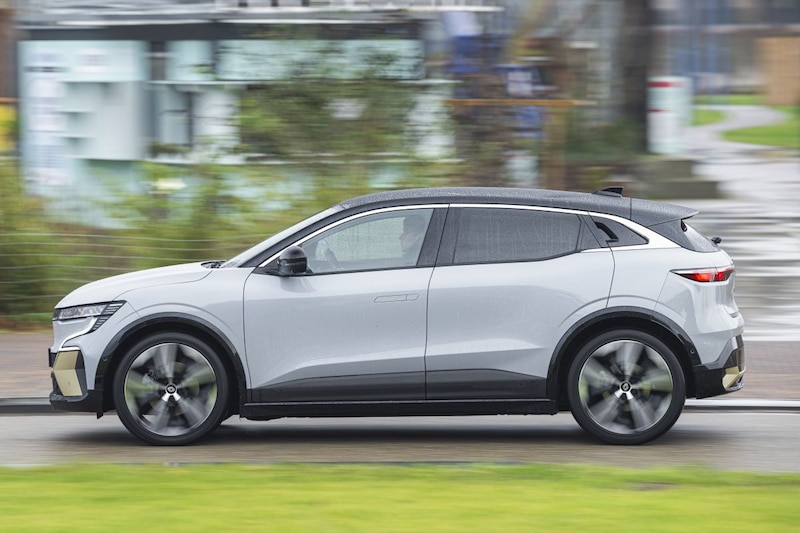
With the Renault Megane E-Tech Electric, Renault is changing course. For the first time, the brand is making a familiar volume model, with a well-known name, available fully electrically. The ‘regular’ Megane will remain in the range for a while, albeit only as a station wagon. How do you like the new electric hatchback in daily practice? Directors provide the answer themselves.
Although you immediately recognize the Megane E-Tech Electric as a Renault, the brand has done quite a job underneath. Not only is the platform new, it also uses a completely new infotainment system based on Android Automotive. Not an unnecessary luxury, the old R-Link system in the current Megane provided little enthusiasm among users. The electric Megane is available in three versions. The entry-level version, EV40 130 hp, has a 130 hp electric motor in combination with a 40 kWh battery. This can possibly be upgraded to 60 kWh, creating the EV60 130 hp. The top model connects this large battery to a 220 hp electric motor and is called, as you expected, EV60 220 hp. In all cases, the driving forces go to the front wheels.
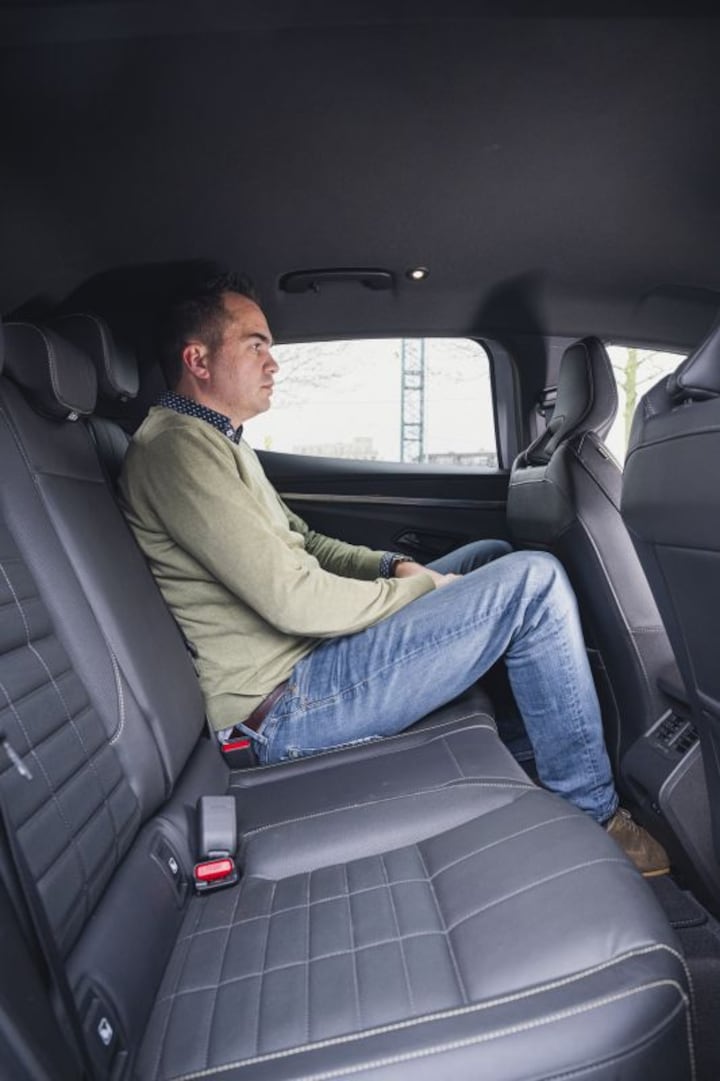
Space and seating comfort
Before we look at modern features such as driver assistance systems and infotainment systems, we will examine more traditional car matters. To start with the space available. “The car itself, on the other hand, I like. Quiet, comfortable and spacious, especially in the back seat more spacious than the Megane IV,” writes a driver who also gained experience with the previous model. He writes the following about the sitting position. “I also find the adjustability of the steering wheel and driver’s seat striking, both have a very large adjustment range in height and length. So everyone should be able to find a good sitting position.” And about the furniture: “The seats in the front are flatter and, in my opinion, slightly wider than in the Megane IV (Bose + version) that I had, so you sit a little more ‘on’ than ‘in’. But not less good or less comfortable.”
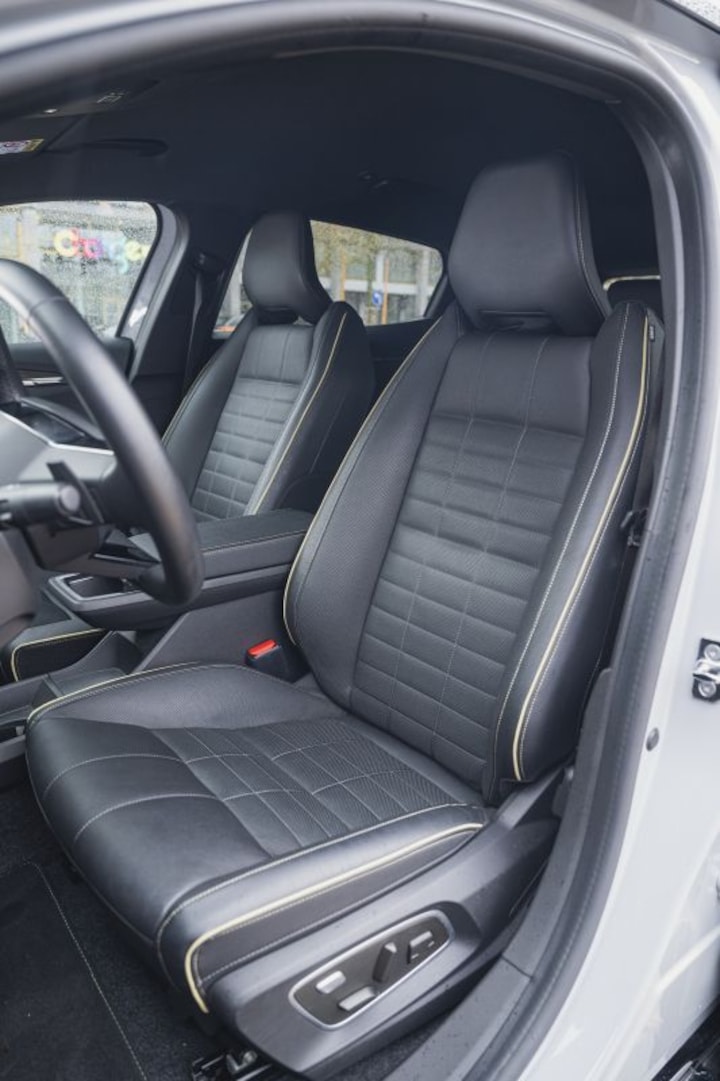
Those who regularly take rear passengers with them could still receive criticism from the back seat. “Tight space under the front seats, causing rear passengers to get their feet stuck,” a driver wrote briefly. An experience he shares with another director. “Is there anything else to complain about?” he wonders, and answers: “Not really, unless you always have people in the back with fat feet. Because the space under the front seats is not good for the rear passengers. In any case, it is not exciting for our situation and it does not bother us. Even someone over 1.90 meters tall recently had no complaints when riding in the back.” He writes the following about the 440 liter trunk. “The high lifting threshold at the rear box took some getting used to, but due to its enormous depth the box is actually larger than you think. Try using (large) travel suitcases and it will be amazing what goes in them.”
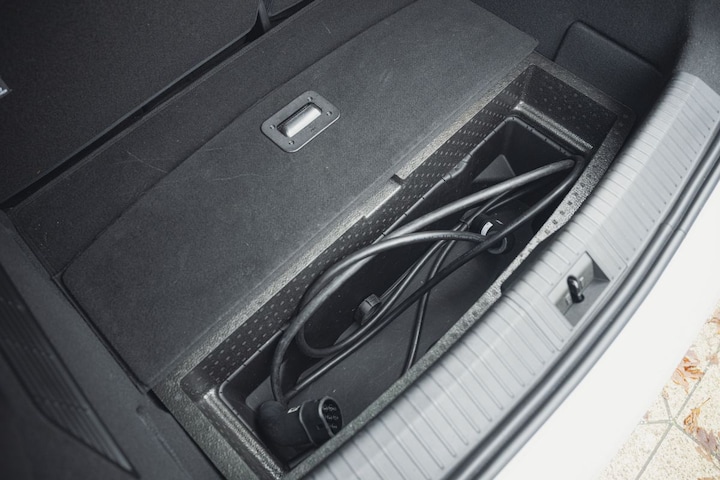
Not everyone is so positive about the space and seating position, so the next driver finds a less comfortable seat behind the wheel. “First of all, the center console is very deep (gear lever is on the steering wheel), so your knee rests on a small surface, which becomes uncomfortable after 5 minutes. I now move the seat further back so that my knee is no longer resting on it, but now it falls into the deep center console and I actually sit a little too far away.” In short, this driver suffers from a problem that drivers also experienced with the previous generation Megane.
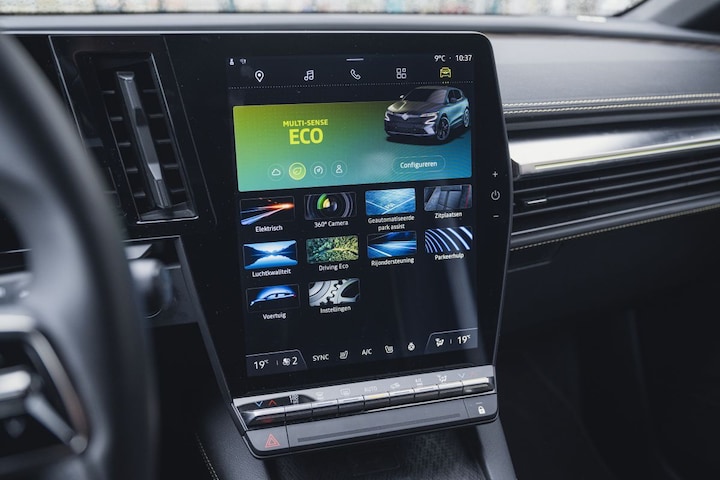
Infotainment and controls
Fortunately for Renault and the drivers, there is one topic that is really being applauded, including by this driver. “The openR-Link system (or LG IVI on Android Automotive) works great. Fast, stable, easy to use. Although there are many options and setting options, it is easy and quick to operate.” Another boost: “The spoken commands also work smoothly, just like at home with Google Home. In practice, you probably mainly use navigation commands (Hey Google, navigate to…). This goes super smoothly and quickly. But typing on the screen also works very well.”
Another goes even further. “Google system is really fantastic in the car. The new standard as far as I’m concerned. Works very quickly and voice commands finally work as they should – almost everything hits immediately.” Well, almost. “Apart from losing the GPS once (okay, somewhere deep in Friesland), otherwise nothing but praise,” he concludes.
Have you had enough of so much positivity yet? Too bad, we’ll just do another one. “I can only repeat that the Google system in the car is really great and for us it is almost a must for all future cars,” writes a third positive person. “It works quickly, super efficiently and very accurately with voice commands.” And a fourth, in semi-telegram style: “The operation is simple. The large Google screen responds well. All functions easy to find. Climate works via real buttons, which is very nice.

How does an electric Megane drive?
So far a lot of positive things, but riders continue happily. “The handling is excellent,” writes a driver about his 220 hp Megane. “I would say an almost perfect combination of driving comfort and dynamics. The cornering behavior is razor sharp. Small bumps come through but not too many and on the highway it is in its comfortable element.” This rider is also enthusiastic about the driving modes. “With the different modes you can drive nice and easy or very sporty and the differences are significant. I set the steering tension to Sport (for the most ‘road feeling’) and the rest to Comfort. In Sport mode it is very quick on the gas and in Comfort you can drive very comfortably and in a nicely measured manner.”
Another driver, also with a 220 hp version, experiences the same thing, but he starts by describing the peace and quiet on board. “The car is really quiet up to 110 km/h. Above that, clear, but not disturbing wind noise is audible.” Then the driving experience. “The sports mode turns the comfortable car into a huge sprinter, which does not pull away very roughly but continues for a long time.” What can you notice when driving sportily? “The front-wheel drive means that during a sprint you clearly feel the front rising with the occasional front wheel looking for grip, but then you are really crossing the line in terms of pleasant driving. This does not bother you during normal driving. Steering is very direct in sport mode and relaxed in comfort mode. There is a really clear difference between the driving modes.”
The driver of an entry-level E-Tech, the version with 130 hp and a smaller battery, is also pleased with the ride. “The Megane behaves like a very mature car and I was positively surprised by the handling and comfort.” It turns out not to be his first electric car. “I had some difficulty saying goodbye to my Volkswagen ID.3, but after the first kilometers I quickly forgot about the VW.” An important aspect of an EV is of course the range. We have previously written about the driving range of the Renault Megane E-Tech Electric in practice.
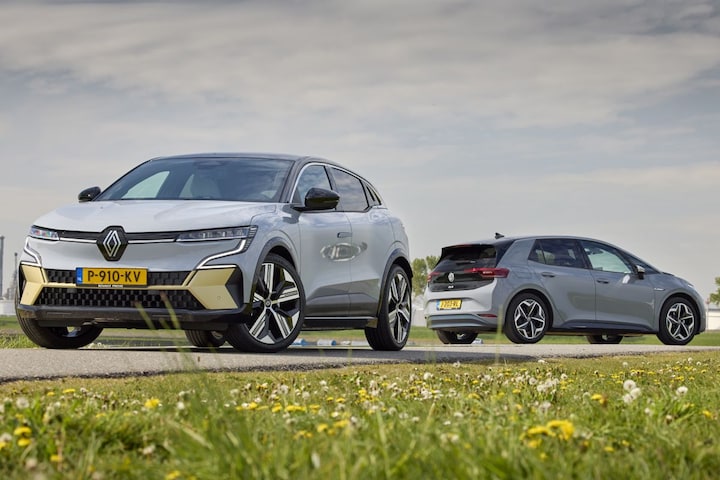
Received driving aids differently
It becomes clear that not everything is experienced positively when we take a closer look at the driver assistance systems. “I think the biggest problem is the driving aids,” writes a driver who is less satisfied in this area, and explains why. “The adaptive cruise control is downright dangerous, I have had several times where the car anchors because a car or traffic sign is detected while there are none.”
Another rider shares this experience. “On this Megane you have ‘ghost reports’ several times per trip of obstacles/cars that suddenly appear according to the car. This causes the car to suddenly slam on the brakes out of nowhere. You’re shocked, but fortunately it’s only a fraction of a second, so before you can react the car continues at the set speed.” This rider will partly come back to this in a later update. “I have the feeling that the ghost reports from the radar have become fewer. They are still there occasionally, but less often and less pronounced.”
The next rider has the same experience and comes up with a possible explanation. “The initial occasional ‘ghost message’ while using the Adaptive Cruise Control, such as suddenly releasing the accelerator, for example, actually disappeared quite quickly. The conclusion is that this almost certainly must have come from the map notifications from Google Maps. In the rare places where it used to happen, this is no longer the case. Long live the updates.”
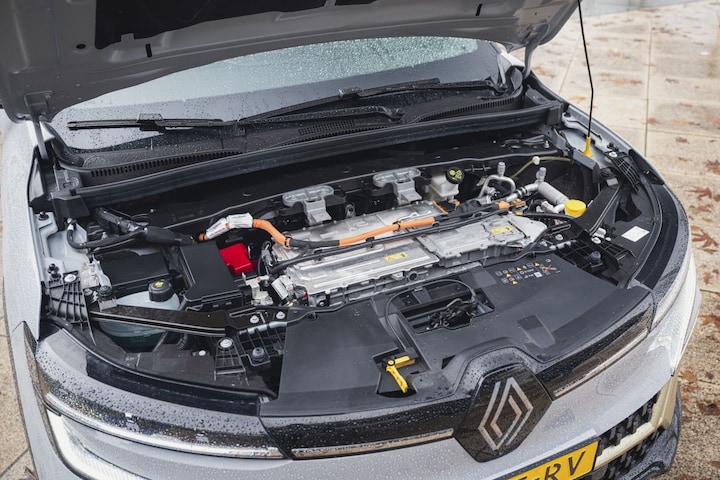
Disruptions and irritations
A remarkably common complaint concerns the accelerator pedal. “I quickly noticed what I read more,” writes one of the experts. “A strange click or delay in the power pedal. Felt a bit strange at first, but apparently it is part of the car.” Another rider also notices it. “Strange tapping in the accelerator pedal when the car switches between ‘accelerating’ and regenerating.” A driver who is less than pleased with his electric Renault describes it as follows. “There is a tap in the accelerator pedal when you go from accelerating to regeneration. Every time, especially when you’re up to speed and you go from throttle to regeneration: tick, tick, tick. If you take it to the garage, they say: that is a product feature, and they just don’t laugh at you.”
The rider who briefly described this phenomenon above also had to deal with ‘real’ failures. “We have now passed the 10,000 km mark. Went back to the Renault dealer several times with a lot of software problems. One software problem caused the front lights to stop working, leaving me unable to use the car. The next morning this fault had disappeared again, so the dealer could not do anything with it, very frustrating to have these kinds of errors.”
Another owner reports a hardware problem. “After about eight thousand kilometers, a distinct cracking sound was suddenly heard when turning strongly at low speed. Nothing dramatic, but annoying. The dealer also heard it clearly and was now able to match it with a message in the Renault Service database, with an associated sound file. So I wasn’t the first. Something with the shock absorber, and the part was replaced immediately upon arrival. Dissolved.”

The driver of an EV60 130 hp has problems with a number of buttons. “In the summer I noticed that the air conditioning only turned off when I had pressed the ‘AC’ button three times. Now it is a virtual button on the screen and I assumed that was the reason, but now that it is getting colder I also have the problem with the steering wheel heating. In principle, this is also a virtual button, but you can program a physical button on the steering wheel as a ‘favorite’ and I did that with the steering wheel heating. I also almost always have to press this button three times before the steering wheel heating switches on. Irritating.” Something similar applies to the cruise control. “The Set/Reset button has a life of its own. If you use the cruise control and you want to set a speed (Set), this usually works fine. But every now and then the car comes up with its own speed. Sometimes the applicable maximum speed, sometimes also the top speed of the car (150 km/h).” A solution is not yet in sight. “The dealer does not recognize this problem and indicates that no update or similar is available.”
Users generally experience their electric Renault Megane as very positive. Compared to the ‘common’ Megane, the car seems more spacious for passengers and luggage, but the foot space in the back is limited and the trunk has a fairly large lifting sill. Users are extremely complimentary about the controls and the new infotainment system and the handling of this Renault is also appreciated. This does not apply to the driver assistance systems, although it appears that they will function better after system updates. These are promising signals for the brand’s electric future, including the new Scenic and upcoming 5 and Twingo.
– Thanks for information from Autoweek.nl